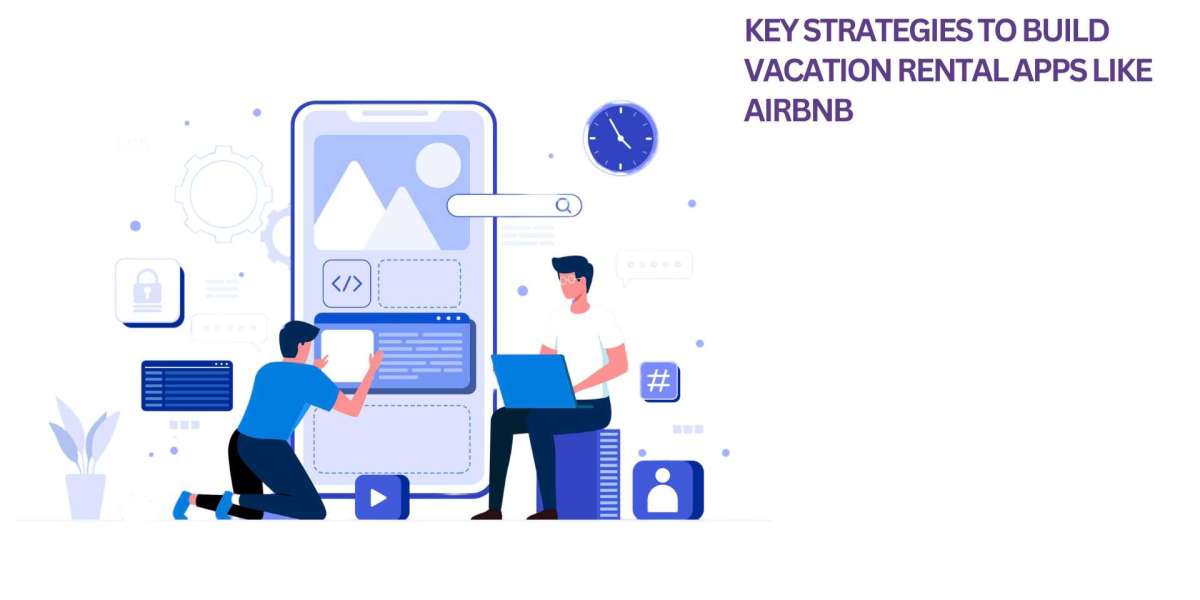The vacation rental industry has experienced exponential growth over the past decade, fueled by the rise of the sharing economy and travelers' increasing preference for unique, home-like accommodations over traditional hotels. Platforms like Airbnb, Vrbo, and Booking.com have revolutionized the way people book stays, offering a vast selection of properties—from cozy apartments to luxurious villas.
For entrepreneurs and businesses looking to enter this lucrative market, building a vacation rental app like Airbnb presents a significant opportunity. However, creating a successful platform requires careful planning, robust technology, and a deep understanding of user needs.
Understanding the Vacation Rental Market
Market Trends Growth Potential
The global vacation rental market was valued at $87.09 billion in 2022 and is expected to grow at a CAGR of 5.5% from 2023 to 2030 (Grand View Research). Key drivers include:
Rise of remote work → More people traveling for extended stays
Demand for unique experiences → Travelers prefer local homes over hotels
Cost-effectiveness → Often cheaper than hotels for groups/families
Target Audience
A vacation rental app serves two primary user groups:
Guests (Travelers) – Looking for affordable, convenient, and unique stays.
Hosts (Property Owners/Managers) – Want to monetize their properties efficiently.
Competitor Analysis
To stand out, analyze competitors like:
Airbnb (Largest player, strong brand recognition)
Vrbo (Focuses on family-friendly rentals)
Booking.com (Aggregates hotels + vacation rentals)
HomeToGo (Meta-search engine for rentals)
Identify gaps in their offerings (e.g., niche markets, better pricing tools) to differentiate your app. Checkout: https://zipprr.com/airbnb-clone/
Key Features of a Successful Vacation Rental App
For Guests:
User Registration Profiles – Social login (Google, Facebook), verification (ID, phone).
Advanced Search Filters – Location, price range, property type, amenities (WiFi, pool, pet-friendly).
Property Listings – High-quality images, 360° tours, detailed descriptions.
Booking Payments – Secure transactions (credit cards, digital wallets), instant booking.
Reviews Ratings – Builds trust; allows guests to share experiences.
In-App Messaging – Direct chat with hosts for queries.
Wishlists Favorites – Save preferred properties for later.
For Hosts:
Property Management Dashboard – Add, edit, and manage listings.
Calendar Availability Sync – Avoid double bookings.
Dynamic Pricing Tool – Adjust rates based on demand, seasonality.
Booking Management – Accept/reject bookings, check-in/out automation.
Host Analytics – Track earnings, occupancy rates, guest reviews.
For Admins:
User Property Verification – Prevent fraud (ID checks, manual reviews).
Booking Payment Monitoring – Handle disputes, refunds.
Marketing Tools – Promotions, discounts, featured listings.
Customer Support – Live chat, ticketing system.
Technology Stack for Building a Vacation Rental App
| Component | Recommended Tech |
|---|---|
| Frontend | React Native (cross-platform), Swift (iOS), Kotlin (Android) |
| Backend | Node.js, Ruby on Rails, Django |
| Database | PostgreSQL, MongoDB, Firebase |
| Payment Gateway | Stripe, PayPal, Braintree |
| Maps Location | Google Maps API, Mapbox |
| Cloud Storage | AWS S3, Google Cloud |
| Real-time Chat | Firebase, WebSockets |
| Push Notifications | Firebase Cloud Messaging (FCM), Twilio |
Step-by-Step Development Process
1. Market Research Planning
Identify target audience and unique selling points (USPs).
Analyze competitors and define MVP (Minimum Viable Product).
2. UI/UX Design
Wireframing (Figma, Adobe XD).
Prototyping (user-friendly navigation, intuitive booking flow).
3. Frontend Backend Development
Build responsive interfaces (React Native for mobile, React.js for web).
Develop APIs for property listings, bookings, payments.
4. API Integrations
Payment Gateways (Stripe, PayPal).
Maps Geolocation (Google Maps API).
Authentication (Firebase Auth, OAuth).
5. Testing QA
Functional testing (booking flow, payments).
Performance testing (load handling, scalability).
6. Deployment Launch
Deploy backend on AWS/Google Cloud.
Release on App Store Play Store.
7. Post-Launch Maintenance
Regular updates, bug fixes, feature enhancements.
Monetization Strategies
Commission Model (10-15% per booking).
Subscription Plans (Hosts pay monthly for premium features).
Featured Listings (Promoted properties for higher visibility).
Advertising (Partner with local businesses).
Challenges Solutions
| Challenge | Solution |
|---|---|
| Fraudulent Listings | Strict verification (ID, property checks). |
| Payment Disputes | Secure escrow payments, clear cancellation policies. |
| High Competition | Niche targeting (luxury, pet-friendly, long-term stays). |
Marketing Growth Strategies
SEO Content Marketing (Blogs, city guides).
Social Media Ads (Instagram, Facebook).
Referral Programs (Discounts for inviting friends).
Partnerships (Travel influencers, local tourism boards).
Conclusion
Building a vacation rental app like Airbnb requires strategic planning, robust technology, and user-centric features. By focusing on trust, convenience, and scalability, you can create a platform that stands out in this competitive market.








